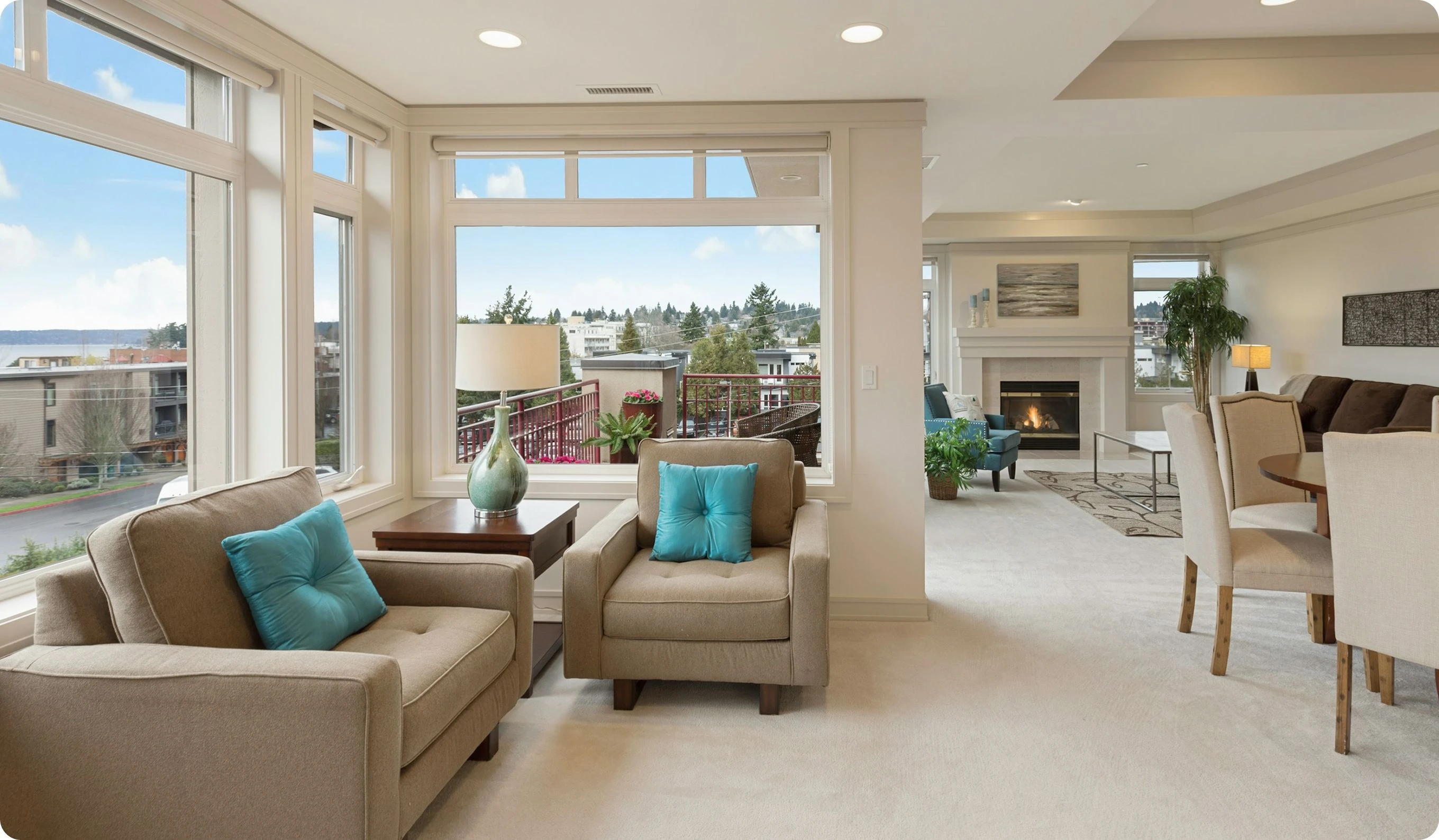Structured Growth Real Estate Consulting in Los AngelesStreamlining entitlements and maximizingreturns across diverse LA markets

Business advising for developers
brokers in USA
Complex entitlement processes
Los Angeles’ multilayered entitlements—zoning variances, conditional use permits, and design review board approvals—can delay developments. VelesClub Int. manages these workflows, liaising with LADCP, Planning Commissions, and City Council to secure timely entitlements.
CEQA compliance challenges
California Environmental Quality Act (CEQA) reviews for environmental impact reports add procedural layers and potential litigation risk. We coordinate with environmental consultants and legal counsel to prepare EIRs, negotiate mitigations, and navigate public comment periods efficiently.
Market segmentation complexity
From coastal luxury in Santa Monica to adaptive-reuse opportunities in downtown Arts District, LA’s micro-markets require tailored strategies. VelesClub Int. delivers granular submarket analyses, absorption forecasts, and comparative valuations to optimize asset positioning.
Complex entitlement processes
Los Angeles’ multilayered entitlements—zoning variances, conditional use permits, and design review board approvals—can delay developments. VelesClub Int. manages these workflows, liaising with LADCP, Planning Commissions, and City Council to secure timely entitlements.
CEQA compliance challenges
California Environmental Quality Act (CEQA) reviews for environmental impact reports add procedural layers and potential litigation risk. We coordinate with environmental consultants and legal counsel to prepare EIRs, negotiate mitigations, and navigate public comment periods efficiently.
Market segmentation complexity
From coastal luxury in Santa Monica to adaptive-reuse opportunities in downtown Arts District, LA’s micro-markets require tailored strategies. VelesClub Int. delivers granular submarket analyses, absorption forecasts, and comparative valuations to optimize asset positioning.

Faydalı makaleler
ve uzmanlardan öneriler
Real Estate Advising in Los Angeles
Regulatory environment and land-use framework
Los Angeles real estate operates under a comprehensive regulatory framework that integrates federal, state, and local statutes. At the federal level, developments must comply with Americans with Disabilities Act (ADA) accessibility requirements, Clean Air Act mandates for construction-related emissions, and stormwater regulations under the National Pollutant Discharge Elimination System (NPDES). California state laws—particularly the California Environmental Quality Act (CEQA)—require environmental review for projects that can have significant impacts on traffic, air quality, and public resources. CEQA compliance often involves preparing an Initial Study, Negative Declaration, or full Environmental Impact Report (EIR), and navigating public comment periods and potential legal challenges under California Code of Regulations Title 14, Chapter 3.
At the local level, the Los Angeles Municipal Code (LAMC) and the Los Angeles County Zoning Code (LAZC) govern land use, density, height, and design standards. The Los Angeles Department of City Planning (LADCP) administers General Plan elements—such as Mobility, Housing, and Conservation—with policies mapped across Community Plans for each of the city’s 35 Community Plan areas. Entitlement processes include obtaining zone changes, conditional use permits (CUPs), variances, and administrative clearances, often requiring hearings before the City Planning Commission, Area Planning Commissions, or the City Council. Overlay districts—such as the Transit Oriented Communities (TOC) Ordinance and Specific Plans for Arts District, Hollywood, and Wilshire Boulevard Corridor—add additional development incentives and restrictions. In coastal areas governed by the California Coastal Act, projects must secure Coastal Development Permits from the California Coastal Commission in addition to local approvals. Building permits are issued by the Los Angeles Department of Building and Safety (LADBS), enforcing the California Building Code with amendments for seismic design, fire safety, and energy efficiency (Title 24). Rent stabilization rules, including state-wide AB 1482 and the Los Angeles Rent Stabilization Ordinance (RSO), impact multifamily investment strategies through limitations on rent increases and eviction protections.
Market dynamics and submarket segmentation
Los Angeles comprises distinct micro-markets that cater to diverse investment profiles. Coastal submarkets—Santa Monica, Venice, and Malibu—command premium pricing for luxury condominiums, oceanfront estates, and boutique hospitality developments, yielding 4–6 percent stabilized returns but demanding high entry costs and complex coastal permitting under the Coastal Act. Westside neighborhoods—Brentwood, Westwood, and Culver City—feature a mix of high-density multifamily, adaptive-reuse office conversions, and mixed-use retail developments near transit nodes (Expo Line). Central business districts—Downtown LA (DTLA), Arts District, and Hollywood—offer value-add opportunities in historic adaptive reuse, transit-oriented developments under LAMC’s Transit Priority Area guidelines, and boutique hotel conversions leveraging the Adaptive Reuse Incentive Ordinance and Mills Act historic-property tax incentives.
Suburban growth corridors—Long Beach, Koreatown, and Northridge—provide mid-rise residential and industrial-warehouse conversions, driven by e-commerce demand and logistics needs. Inland Empire and San Fernando Valley markets attract build-to-rent single-family rental communities and industrial parks adjacent to major freeways (I-5, I-10, I-405) and intermodal facilities. Student-housing segments near UCLA, USC, and Cal State campuses generate consistent occupancy, while senior-housing projects benefit from aging demographics and proximity to medical centers. VelesClub Int. conducts in-depth submarket segmentation, demographic analysis, and absorption forecasting—integrating CoStar data, local MLS trends, and proprietary field surveys—to tailor investment strategies for each asset class and location within the sprawling LA region.
Entitlement and due diligence procedures
Entitlement and diligence workflows in Los Angeles involve multiple concurrent tracks. VelesClub Int. initiates due diligence with a Title Commitment from a licensed title insurer, pre-closing land surveys, and geotechnical investigations to assess soil, seismic risk, and grading constraints. Environmental Phase I assessments identify potential contaminant liabilities—particularly in industrial zones and brownfield sites—leading to Phase II testing where necessary. We coordinate with qualified environmental consultants to prepare CEQA documentation, identifying Mitigation Measures to address traffic, noise, and greenhouse-gas impacts. Simultaneously, our planning team evaluates zoning envelopes, community plan conformance, and overlay-district incentives—such as density bonuses under the Affordable Housing Incentive Ordinance—to maximize project FAR and streamline approvals.
Entitlement processes typically begin with a Project Application (PA) filed with LADCP, triggering completeness reviews and public notices. Community outreach sessions and neighborhood council presentations are scheduled to gauge local support and address concerns. Conditional use permit hearings, variance requests, and Design Review Board presentations are managed by our land-use attorneys and planners, mitigating appeal risks and ensuring alignment with Community Plan goals. Upon entitlement approval, we secure building permits from LADBS, coordinating plan checks, structural calculations, and engineering sign-offs. Our team maintains continuous communication with city agencies—using Accela PermitsLA portals and MyLA311 services—to track progress and resolve issues swiftly.
Role of brokers, financing, and title insurance
Los Angeles brokerage and financing ecosystems are highly specialized. Institutional capital sources—such as pension funds, REITs, and private equity firms—engage national and regional brokerage platforms like CBRE, JLL, and Marcus & Millichap for deal origination, market intelligence, and disposition services. Retail investors and smaller developers utilize local associations and MLS networks for residential condo conversion and single-family infill opportunities.
Financing structures include construction loans from specialized lenders, HUD-insured multifamily mortgages, CMBS securitizations, and permanent financing via Fannie Mae and Freddie Mac platforms. Mezzanine debt and preferred equity layers are arranged for leverage optimization, balancing interest rate costs with equity returns. VelesClub Int. advises on optimal capital stacks—structuring senior debt, mezzanine financing, EB-5 capital, and equity raises—to meet sponsor return targets and debt-service coverage ratios.
Title insurance in Los Angeles County is critical due to historical mining claims, retroactive easements, and Mello-Roos Community Facilities District (CFD) bonds. We partner with A-rated underwriters—First American, Fidelity, and Stewart—to secure both owner’s and lender’s policies, requiring resolution of Exceptions through curative endorsements. Our title-insurance protocols include proactive lien searches, CFD disclosures, and mineral-rights verifications to minimize post-closing claim exposures.
Working with international investors and tax strategies
Los Angeles attracts significant cross-border capital from Latin American, Asian, and European investors. Foreign buyers must navigate FIRPTA withholding, requiring 15 percent of sale proceeds to be withheld unless exemptions apply. VelesClub Int. coordinates FIRPTA compliance through escrow instructions and IRS Form 8288 filings, ensuring accurate remittances and waivers where applicable.
To optimize tax outcomes, investors leverage 1031 tax-deferred exchanges—identifying replacement properties within 45 days and closing within 180 days—to defer capital gains. U.S. Qualified Opportunity Zones (QOZs) in South LA, Inglewood, and Compton provide additional incentives for capital gains deferral and step-up in basis. EB-5 financing remains an option for large-scale projects, securing U.S. residency for investors committing $800,000 into TEA-designated areas, subject to precise job-creation documentation and USCIS compliance.
Entity structuring through Delaware statutory trusts (DSTs), series LLCs, and single-purpose entities helps isolate liability, optimize estate planning, and accommodate syndication. VelesClub Int. collaborates with tax counsel and CPA firms to design entity frameworks that align with U.S. tax code provisions—such as interest expense deductibility under TCJA Section 163(j)—and mitigate state and local tax (SALT) exposures under California SB 150.
VelesClub Int.’s advisory solutions
- Strategic market positioning: We identify high-opportunity micro-markets—such as West Hollywood adaptive reuse and South LA QOZ developments—based on demographic trends, infrastructure investments (Expo Line extensions), and municipal incentive programs.
- Entitlement and compliance management: Our multidisciplinary team prepares CEQA documentation, secures zoning variances, manages condition compliance plans, and interfaces with LADCP and LADBS to drive permit approvals.
- Due diligence and risk mitigation: We coordinate title commitments, environmental site assessments, geotechnical analyses, and lien searches—paired with comprehensive risk matrices to inform pro forma modeling.
- Transaction execution: From LOI structuring and escrow coordination to closing document preparation and recording, we orchestrate every procedural step—ensuring timely, compliant transactions.
- Capital structuring: Our finance specialists design optimized debt and equity solutions, manage 1031 exchanges, EB-5 financing, and QOZ investments, and negotiate financing terms to meet IRR targets and DSCR requirements.
- Asset management and disposition: We oversee lease-up strategies, property-management partnerships, performance monitoring, and disposition planning—leveraging market timing and exit scenarios to maximize investor returns.
- Stakeholder coordination: We align efforts among brokers, architects, engineers, general contractors, insurers, lenders, and regulatory agencies—providing centralized governance and transparent reporting throughout the project lifecycle.
Conclusion and next steps
Los Angeles real estate presents unparalleled opportunities across residential, commercial, industrial, and hospitality sectors—driven by global capital flows, technological innovation, and resilient demand. However, the city’s fragmented regulatory environment, CEQA complexities, and specialized tax structures require expert advisory services to navigate efficiently and capture maximum value. Partnering with VelesClub Int. equips you with proprietary market intelligence, comprehensive entitlement management, transaction coordination, and tailored capital structuring—delivering an end-to-end advisory platform optimized for institutional and corporate investors. To initiate your Los Angeles investment strategy, schedule a detailed consultation with our advisory team to define project objectives, conduct preliminary feasibility analyses, and develop a customized execution roadmap. Engage VelesClub Int. today to capitalize on Los Angeles’ dynamic real estate landscape with confidence, precision, and clarity.
